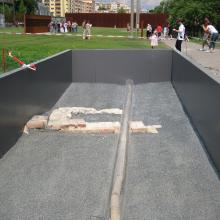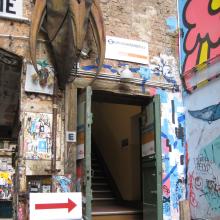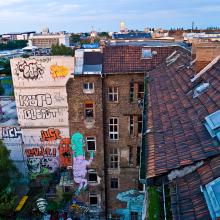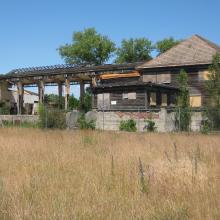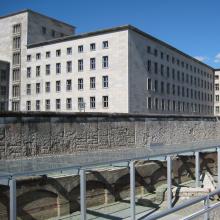Multimedia
In Counterpreservation: Architectural Decay in Berlin since 1989, Daniela Sandler examines the intentional appropriation of decrepitude in residential, cultural, and memorial projects. In Berlin, decrepit structures do not always—as one might expect—become black holes of urban blight. Decayed buildings are incorporated into everyday life by housing residences, galleries, shops, studios, offices, and leisure spaces. They are also visual platforms for groups and individuals to express dissenting views about the future and past of Berlin, serving as nodes of public dialogue. Sandler introduces the concept of counterpreservation to understand these phenomena.
As a complement to Sandler’s book, Signale provides free public access to an image gallery documenting these spaces. The images showcase the diversity of examples of counterpreservation. Some of the examples included here are discussed at length in the book, while others are mentioned there only briefly. This gallery is intended as a supplement that expands the book by including more examples, more photographs, and presenting them in color. The gallery also includes excerpts from an interview with Daniel Libeskind conducted by Sandler in 2014.
Counterpreservation is part of Berlin’s fabric: in the city’s famed Hausprojekte (living projects) such as the Køpi, Tuntenhaus, and KA 86; in cultural centers such as the Haus Schwarzenberg, Schokoladen, and the Tacheles; in memorials and museums; and even in commercial and residential establishments. The appropriation of ruins is a way of carving out affordable, flexible spaces for housing, work, and cultural activities, and of protesting gentrification. It also expresses a complex history, displaying the layered marks of different periods—the nineteenth century, World War II, postwar division, unification.
The collective, bottom-up, and unofficial character of counterpreservation exemplifies everyday urbanism, where citizens shape private and public spaces with their own hands. Counterpreservation has also trickled up into more formal and authored designs—such as the Topography of Terror, the Berlin Wall Memorial, and Daniel Libeskind’s unbuilt redevelopment proposal for a site peppered with ruins of Nazi barracks.
The embrace of decay is a sign of Berlin’s iconoclastic rebelliousness, but it has also been incorporated by the economy of tourism and development as part of the city’s countercultural cachet. This project deals both with the possibilities and shortcomings of counterpreservation as a dynamic force in the present and future of Berlin, and as a potential concept for other cities.
